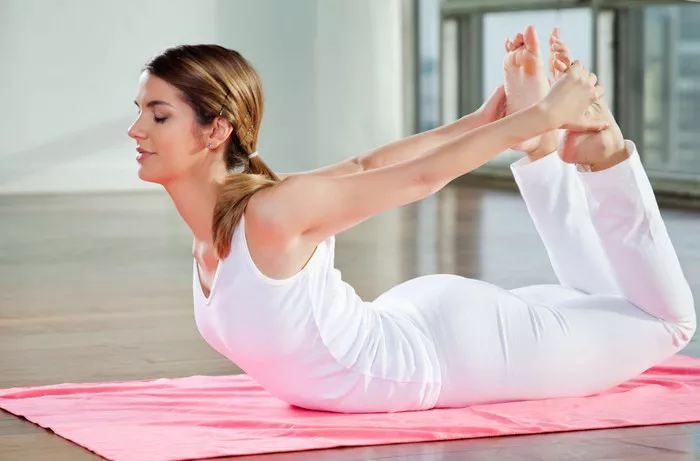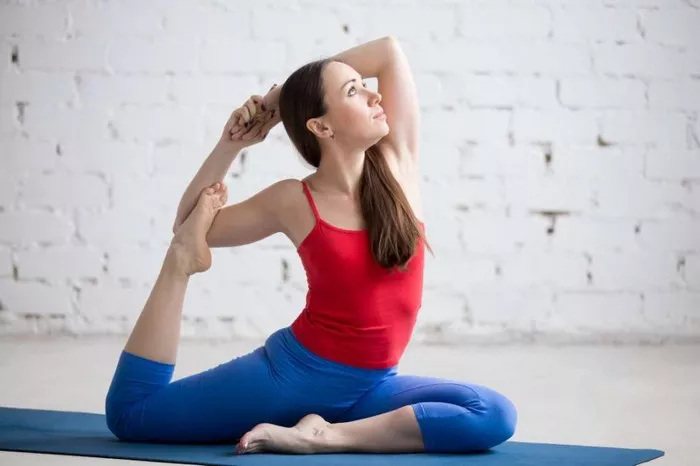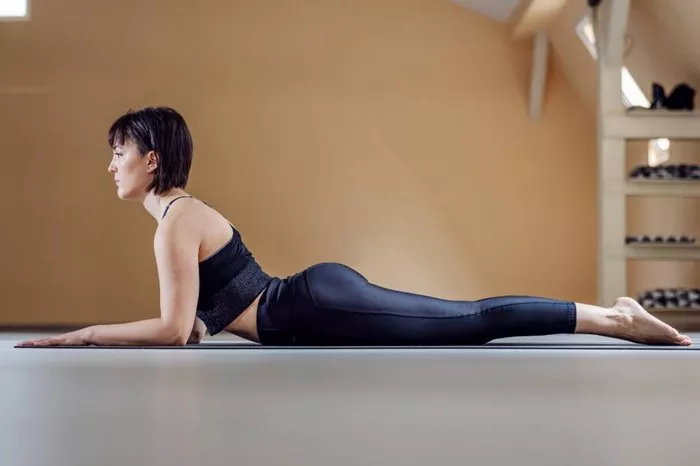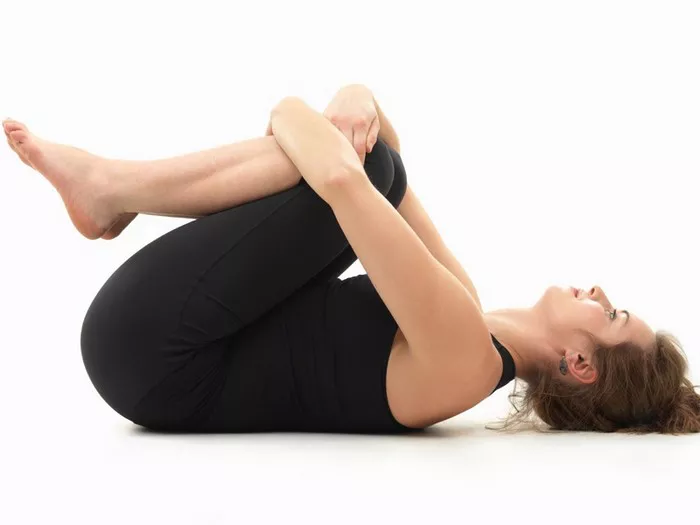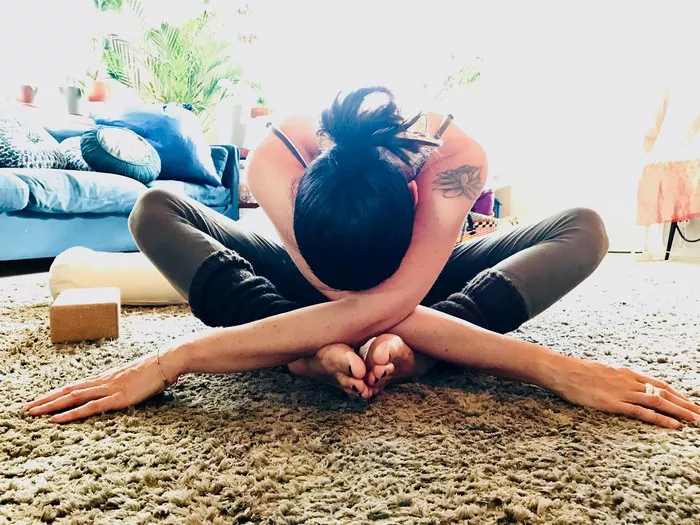Yoga, an ancient practice with origins in India, has gained immense popularity worldwide due to its numerous physical and mental health benefits. Among its many advantages, yoga is particularly effective for strengthening and toning the core muscles, which include the muscles of the stomach and belly. A strong core is not only crucial for a well-balanced physique but also essential for overall health, as it supports better posture, stability, and helps prevent injuries. In this article, we will explore the top 10 yoga poses that specifically target the stomach and belly, helping you achieve a stronger, toned core.
1. Boat Pose (Navasana)
Boat Pose, or Navasana, is a powerful core-strengthening pose that engages the abdominal muscles intensely.
How to Perform:
- Sit on the floor with your legs extended in front of you.
- Place your hands on the floor beside your hips, and lift your chest.
- Lean back slightly, keeping your back straight.
- Lift your feet off the floor, bringing your shins parallel to the floor.
- Extend your arms forward, parallel to the floor, with palms facing each other.
- Balance on your sit bones and hold the pose for 30 seconds to 1 minute.
Benefits:
- Strengthens the abdominals, hip flexors, and spine.
- Improves balance and digestion.
- Enhances focus and concentration.
See Also: 10 Best Ways To Use Yoga Blocks
2. Plank Pose (Phalakasana)
Plank Pose, or Phalakasana, is a foundational yoga pose that builds strength in the entire core, including the stomach muscles.
How to Perform:
- Start in a tabletop position with your hands directly under your shoulders and knees under your hips.
- Step your feet back one at a time, coming into a high plank position.
- Keep your body in a straight line from head to heels.
- Engage your core and hold the pose for 30 seconds to 1 minute.
Benefits:
- Strengthens the abdominals, shoulders, arms, and legs.
- Improves posture and balance.
- Enhances overall core stability.
3. Cobra Pose (Bhujangasana)
Cobra Pose, or Bhujangasana, is an excellent backbend that also engages the abdominal muscles, promoting strength and flexibility.
How to Perform:
- Lie face down on the floor with your legs extended and tops of your feet pressing into the mat.
- Place your hands under your shoulders, elbows close to your body.
- Press into your hands and lift your chest off the floor, keeping your elbows slightly bent.
- Hold the pose for 15 to 30 seconds, then slowly lower down.
Benefits:
- Strengthens the spine and stretches the chest, shoulders, and abdominals.
- Improves posture and reduces fatigue.
- Stimulates the abdominal organs.
4. Bow Pose (Dhanurasana)
Bow Pose, or Dhanurasana, is a dynamic pose that stretches and strengthens the entire front body, including the abdominal muscles.
How to Perform:
- Lie face down on the floor with your arms by your sides.
- Bend your knees and bring your heels towards your buttocks.
- Reach back and grasp your ankles with your hands.
- Inhale and lift your chest and thighs off the floor, pulling your heels away from your buttocks.
- Hold the pose for 20 to 30 seconds, then release.
Benefits:
- Strengthens the back and abdominal muscles.
- Stretches the entire front body, including the chest, shoulders, and thighs.
- Improves posture and stimulates the digestive organs.
5. Warrior III (Virabhadrasana III)
Warrior III, or Virabhadrasana III, is a balancing pose that engages the core, including the stomach muscles, to maintain stability and alignment.
How to Perform:
- Begin in a standing position, with your feet hip-width apart.
- Step your right foot back and shift your weight onto your left leg.
- Extend your arms forward and hinge at your hips, bringing your torso parallel to the floor.
- Lift your right leg straight back, keeping your body in a straight line from head to heel.
- Hold the pose for 20 to 30 seconds, then switch sides.
Benefits:
- Strengthens the core, legs, and back.
- Improves balance and coordination.
- Enhances concentration and mental focus.
6. Half Lord of the Fishes Pose (Ardha Matsyendrasana)
Half Lord of the Fishes Pose, or Ardha Matsyendrasana, is a seated twist that engages the oblique muscles, which are part of the abdominal muscle group.
How to Perform:
- Sit on the floor with your legs extended.
- Bend your right knee and place your right foot outside your left thigh.
- Bend your left knee and bring your left foot near your right hip.
- Inhale and lengthen your spine, then exhale and twist to the right, placing your left elbow outside your right knee.
- Hold the pose for 30 seconds to 1 minute, then switch sides.
Benefits:
- Strengthens the oblique and transverse abdominal muscles.
- Improves digestion and stimulates the abdominal organs.
- Increases spinal flexibility and detoxifies the body.
7. Bridge Pose (Setu Bandhasana)
Bridge Pose, or Setu Bandhasana, is a backbend that strengthens the core and the muscles of the stomach.
How to Perform:
- Lie on your back with your knees bent and feet hip-width apart, flat on the floor.
- Place your arms by your sides, palms facing down.
- Press into your feet and lift your hips towards the ceiling.
- Clasp your hands under your back and press your arms into the floor.
- Hold the pose for 30 seconds to 1 minute, then release.
Benefits:
- Strengthens the core, glutes, and lower back.
- Stretches the chest, neck, and spine.
- Improves digestion and stimulates the abdominal organs.
8. Revolved Triangle Pose (Parivrtta Trikonasana)
Revolved Triangle Pose, or Parivrtta Trikonasana, is a standing twist that engages the abdominal muscles, especially the obliques.
How to Perform:
- Stand with your feet about 3 feet apart, right foot forward and left foot turned slightly inwards.
- Extend your arms out to the sides at shoulder height.
- Hinge at your hips and reach your left hand down to the floor or a block, placing it outside your right foot.
- Twist your torso to the right and extend your right arm towards the ceiling.
- Hold the pose for 30 seconds to 1 minute, then switch sides.
Benefits:
- Strengthens the core and oblique muscles.
- Stretches the hamstrings, hips, and spine.
- Improves balance and coordination.
9. Extended Side Angle Pose (Utthita Parsvakonasana)
Extended Side Angle Pose, or Utthita Parsvakonasana, is a powerful pose that strengthens and stretches the entire body, including the abdominal muscles.
How to Perform:
- Stand with your feet about 3 feet apart, right foot forward and left foot turned slightly inwards.
- Bend your right knee to a 90-degree angle, keeping your knee over your ankle.
- Extend your right hand down to the floor or a block outside your right foot.
- Reach your left arm over your head, creating a straight line from your left foot to your left hand.
- Hold the pose for 30 seconds to 1 minute, then switch sides.
Benefits:
- Strengthens the core, legs, and back.
- Stretches the hips, groins, and chest.
- Improves balance and stability.
10. Mountain Pose (Tadasana) with Variations
Mountain Pose, or Tadasana, might seem simple, but with variations, it can effectively engage and strengthen the core muscles.
How to Perform:
- Stand with your feet together and arms at your sides.
- Engage your thigh muscles and lift your kneecaps.
- Lift your chest and extend your arms overhead, palms facing each other.
- Engage your core and hold the pose for 30 seconds to 1 minute.
- Variation: Tadasana with Core Engagement
- From Tadasana, bring your hands to your hips.
- Lift one knee to hip level, engaging your core to maintain balance.
- Hold for 20 to 30 seconds, then switch legs.
Benefits:
- Strengthens the core and improves posture.
- Enhances balance and stability.
- Prepares the body for more advanced poses.
Conclusion
Incorporating these yoga poses into your regular practice can significantly strengthen and tone your stomach and belly muscles. Each pose offers unique benefits, targeting different areas of the core while also improving overall flexibility, balance, and mental focus. Remember to practice these poses with proper alignment and mindfulness, and consult with a yoga instructor if you’re new to yoga or have any specific health concerns. With consistent practice, you’ll notice improvements not only in your core strength but also in your overall physical and mental well-being.
Related topics:

